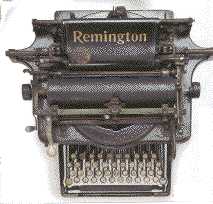|
English Language
|
Development of the Western Alphabet
The Western alphabet has developed from pictographs and ideographs, where a picture represented a thing or an idea, until a picture represented a sound. The "picture" can now be described as a "symbol". Look at the development of these symbols from Ox to A.
The alphabet used for writing the English language has 26 symbols; other Western languages use certain "extra" letters such as ß in German or by adding diacritical marks, sometimes known as "accents". For example é, å, ü, ø. Note that users of the language consider these as letters in their own right, not, as English speakers would have it, "u with two dots on." The two dots incidentally may be described as an "umlaut" where they signify a change in the vowel sound (though properly it is that vowel change rather than the mark itself which is the umlaut). They are known in typography as a "diaeresis", one of many diacritical marks.
The first alphabet, from which we have the Greek, Cyrillic and Roman alphabets of today, was probably invented in Syria or Palestine about 3,600 years ago. Used for trade, to record purchases and exchanges of goods, it spread widely and was developed into a successful communications system.
The oldest known writing using an alphabet was written on clay tablets by the people of Ugarit in what is now modern Syria. They wrote using a letter form called Cunieform Script written with a pointed stylus which was triangular in section and made a combination of lines and triangles in the soft clay. This alphabet had 30 letters.
The Phoenicians were great sailors and traders and came from what is now Syria. Their alphabet had 22 letters and omitted vowel sounds.
The Greeks learned writing from the Phoenicians about 2800 years ago. They modified the letter shapes and added vowels to suit their own language, eventually deciding on writing from left to right and adding spaces between words.
The Etruscans of Italy used a modified Greek alphabet, written from right to left, and when the Romans conquered the Etruscans they adapted it again. The conquering Romans spread their culture throughout western Europe and North Africa and their alphabet became increasingly important as a means of transmitting their culture, trade and ideas far afield. Carved stone inscriptions remain from all over Europe, not least in modern Rome, and even writing on paper and leather has been unearthed in excavations along Hadrian's Wall in Northumberland. The Roman alphabet we use today is essentially the same as that written by the Romans two thousand years ago.
So useful and important has the Roman alphabet been that today as you read this via the Internet or a CD-ROM you will probably be reading a script which is based upon classical or Trajan Roman letter forms.The letter shapes, based first on thick and thin brush strokes, then by the curves and width of chisels carving stone have been electronically adapted for modern technology as "Times" and "Times New Roman." The "serifs" or shaped ends to Roman letters, derived from the nicks used by carvers to finish off the letter strokes have even defined the main categories of letter shapes in typography, the serif and sans serif letter forms.
Alternative
letter forms have certainly been developed over the last thousand years
and modern books on typography are awash with varieties. 
Uncials, the rounded letters of the mediaeval period; Secretary Hand;
Chancery Script; Gothic or "Old English" script (based on German
script and used for example by Johannes Gutenberg for the world's first
printed Bible in 1455), are all alternative styles of type and of writing.
The character of the hand written letter form has lead to the study of
handwriting, called "graphology" by which it is said a writer's
character can be seen through their writing. Calligraphy, the art of fine
writing, can lead to exquisitely clear and beautiful writing or to immensely
ornate flourishes which may detract from the essential purpose of writing
- communication.